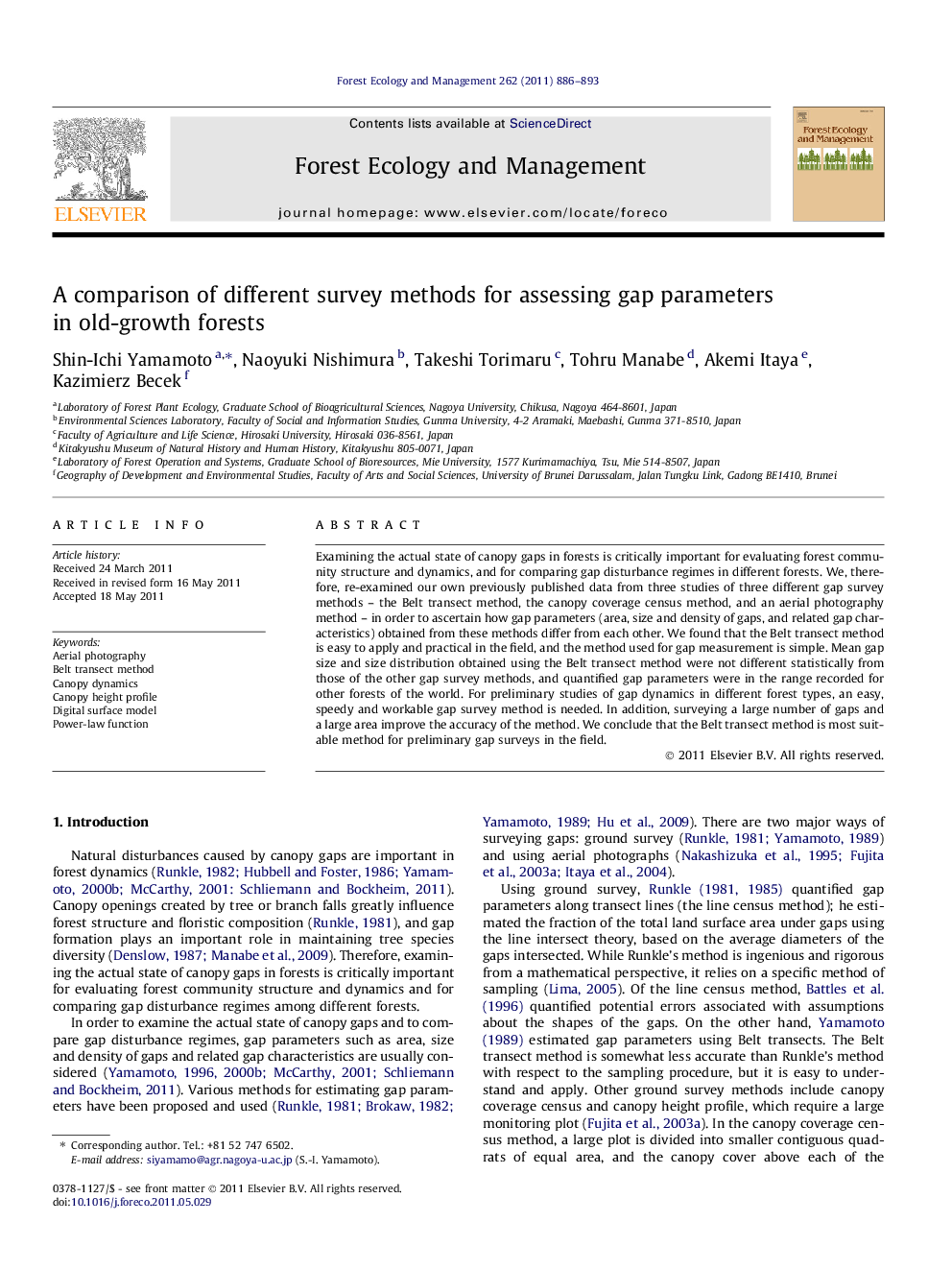| Article ID | Journal | Published Year | Pages | File Type |
|---|---|---|---|---|
| 88079 | Forest Ecology and Management | 2011 | 8 Pages |
Examining the actual state of canopy gaps in forests is critically important for evaluating forest community structure and dynamics, and for comparing gap disturbance regimes in different forests. We, therefore, re-examined our own previously published data from three studies of three different gap survey methods – the Belt transect method, the canopy coverage census method, and an aerial photography method – in order to ascertain how gap parameters (area, size and density of gaps, and related gap characteristics) obtained from these methods differ from each other. We found that the Belt transect method is easy to apply and practical in the field, and the method used for gap measurement is simple. Mean gap size and size distribution obtained using the Belt transect method were not different statistically from those of the other gap survey methods, and quantified gap parameters were in the range recorded for other forests of the world. For preliminary studies of gap dynamics in different forest types, an easy, speedy and workable gap survey method is needed. In addition, surveying a large number of gaps and a large area improve the accuracy of the method. We conclude that the Belt transect method is most suitable method for preliminary gap surveys in the field.
► The mean gap size was not statistically different between the gap survey methods. ► Gap size distributions were accurately predicted by the power-law function. ► The Belt transect method is most appropriate ground technique for gap surveying. ► The Belt transect method is convenient for estimating gap parameters.
